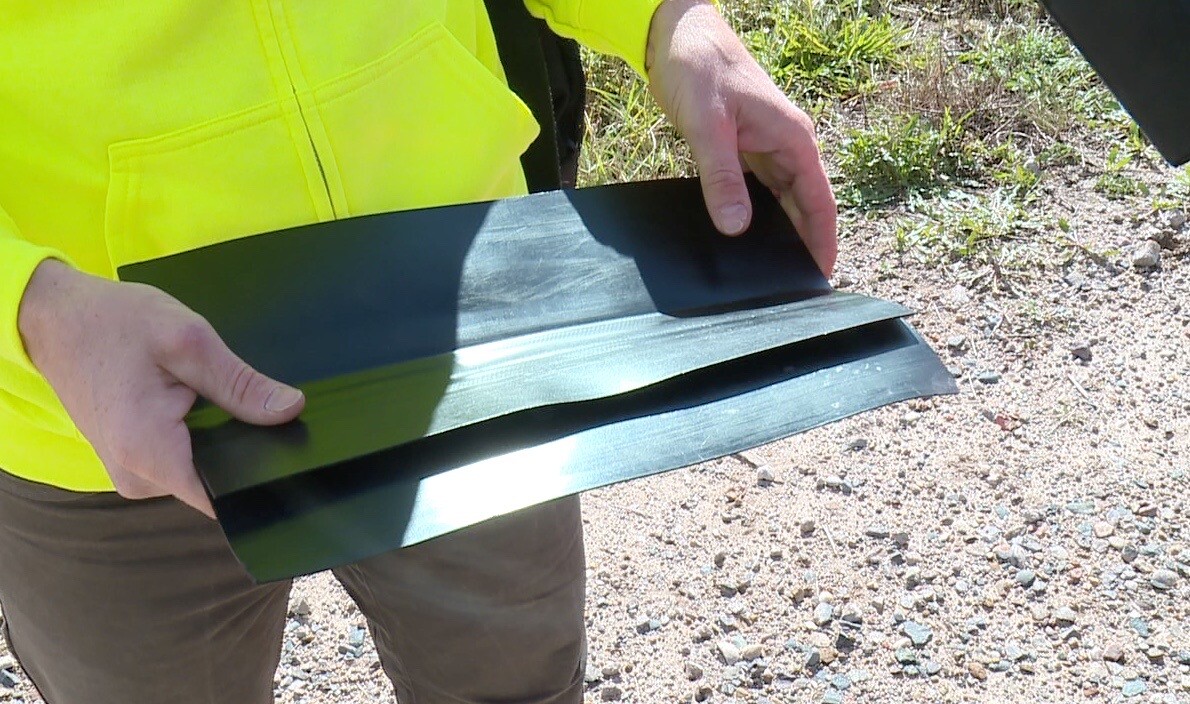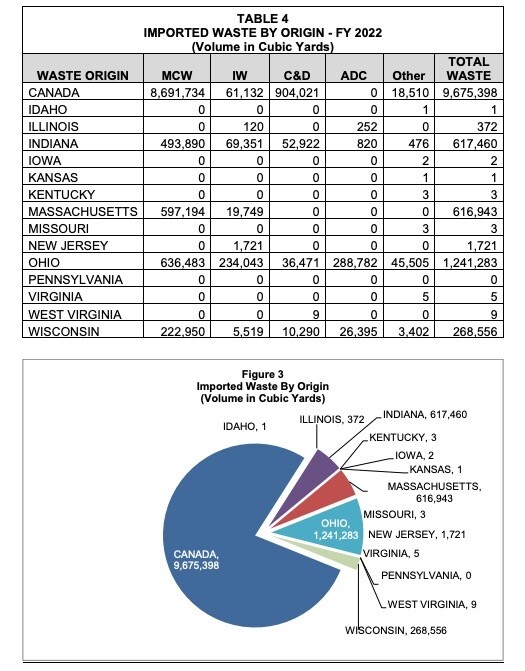WEST MICHIGAN — Out of sight, out of mind. That's how most of us feel about garbage. Once it's taken away, it's taken care of. However, that's when the real work begins.
Have you ever wondered what happens when you send your unwanted items to the garbage? Or, how the landfills in Michigan operate? Here at FOX 17, we're taking a deeper dive into how a landfill truly works.
HOW A LANDFILL WORKS
Landfills are engineered structures, designed to hold and isolate waste to keep the public safe. Phil Roycraft with the Michigan Department of Environment, Great Lakes, and Energy (EGLE) is a landfill expert, who knows that there a lot of steps towards keeping the landfill operational. "It's really a massive civil engineering project that involves liners underneath to keep what contaminated water from getting into the ground," said Roycraft. "It involves filling techniques that try to minimize nuisance conditions."

It all begins with the drop off. Trucks file into the landfill, passing first over a weigh station. Depending on the weight of the trash, they are billed a "tipping fee." The landfill rate per ton can range between 20 to 40 dollars per ton, according to the Kent County Department of Public Works. This rate is less than the tipping fee for a recycling center. This can often drive businesses to send their unwanted materials to the landfill instead of a recycling facility.
The trucks then dump the trash in "cells" which are specific areas where waste is placed. It is then crushed or compacted by a large tractor called a compactor. It weighs over 100,000 pounds!

There are several protective measures and layers designed to keep people safe from the side effects of landfills. For a complete and detailed understanding of a landfill, click here for a story map from the Michigan Department of Environment, Great Lakes, and Energy (EGLE).
Below is a cross section of a solid waste landfill cell, created by EGLE.

The top layer is designed to collect the landfill gas that is naturally created by decomposing garbage. The top layer includes several liners and a gas pipe to collect the gases released. According to EGLE, landfill gas is about 50 percent methane and 50 percent carbon dioxide. There are other trace gases, including hydrogen sulfide and mercaptans from sulfur reducing bacteria.
Methane is a greenhouse gas.
Some landfills vent the gas to the atmosphere or burn it as a flare. A flare looks like a huge lighter. Many Michigan landfills collect the gas through a series of pipes. The methane is burned in large engines to power a generator and produce electricity.

The bottom layer consists of a liner system, which is designed to keep waste from getting into our environment. In particular, the groundwater that we use to drink.
Micah Herrboldt is a waste reduction educator with the Kent County Department of Public Works. His job often consists of giving tours of the Kent County landfill, along with their recycling center. You can see him holding one of the liners below.

One of the bottom layers that is the most important is the leachate collective system. When it rains or snows, the water travels through the landfill. It then leaches, or draws out, chemicals and particles from the waste. Eventually, that creates a liquid called leachate, which is dangerous and can cause serious harm.
Below is an image of what leachate looks like.

"We affectionately refer to it as trash juice," said Herrboldt. "It has to be collected, because we do not want that getting into the environment or into our groundwater. We have these wells around the entire landfill, that way we can monitor what's coming out of the landfill." Below is an image of one of the wells.

Landfills are monitored constantly to keep the public as safe as possible. The rate at which we are dumping trash in the landfill is significantly higher than what it was a few decades ago.
WHERE MICHIGAN STANDS
People have been burying unwanted items for thousands of years. If a person had unused or extra land, they would often bury their waste. Some individuals would even charge others to use their land to bury their trash. Up until 1965, the state of Michigan did not have any rules or regulations on landfills. That means that we've been monitoring what is dumped into our land over about the past six decades.

As of this year, Michigan has 46 landfills accepting "everyday" waste, according to the Michigan Department of Environment, Great Lakes, and Energy. (EGLE) That number doesn't include the amount of landfills that are full or couldn't meet upgrade requirements.
According to Statista and the Kent County Department of Public Works, the state of Michigan has the most trash buried per person than any other state in the nation.

EGLE predicts that if we don't make any changes to our current waste rate, all of the landfills in Michigan will be full in 28 years.
Why? First of all, we're throwing things away at a far faster rate than a few decades ago. In 2022, more than 51 million cubic yards of waste ended up in Michigan landfills. That's according to a yearly study done by the Michigan Department of Environment, Great Lakes, and Energy. (EGLE)
That's the equivalent of covering almost three quarters of Kent County with one inch of compacted trash. It's also the equivalent of covering the entire city of Grand Rapids in about 13 inches of compacted trash.
However, the trash doesn't just come from our residents. Last year, Michigan received over 18 percent of itss trash from parts of Canada and over 5 percent from surrounding states. Click here for the full report done by EGLE.

While dumping trash into the landfill may never come to a complete halt, slowing it down is essential.
"Even though we've got 28 years of capacity left, we sort of have a window here to try to reduce the amount of waste that actually has to go to a landfill. Instead, we'd much rather recycle it," said Roycraft. "Or, put it back into the economy where it can be used as a raw material.”
Our next steps, according to the Kent County Department of Public Works, are to reduce, reuse, and recycle.
"It might sound simple, but the R's that we oftentimes talk about ... reduce, reuse, recycle ... there's a reason that recycle is the third one," said Herrboldt. "Because reduce and reuse are things that you do prior to even having to get rid of an item, right?"
Micah Herrboldt's recommendation is to visit a landfill and see it for yourself.

"Actually put that picture into your mind and see what are the consequences of the lifestyles we live, not necessarily that it's bad or anything, but that there is truly a place that this stuff has to go," said Herrboldt.
To learn about what truly happens to your recycled materials, tune in for the second part of our Recycling Week Series.




